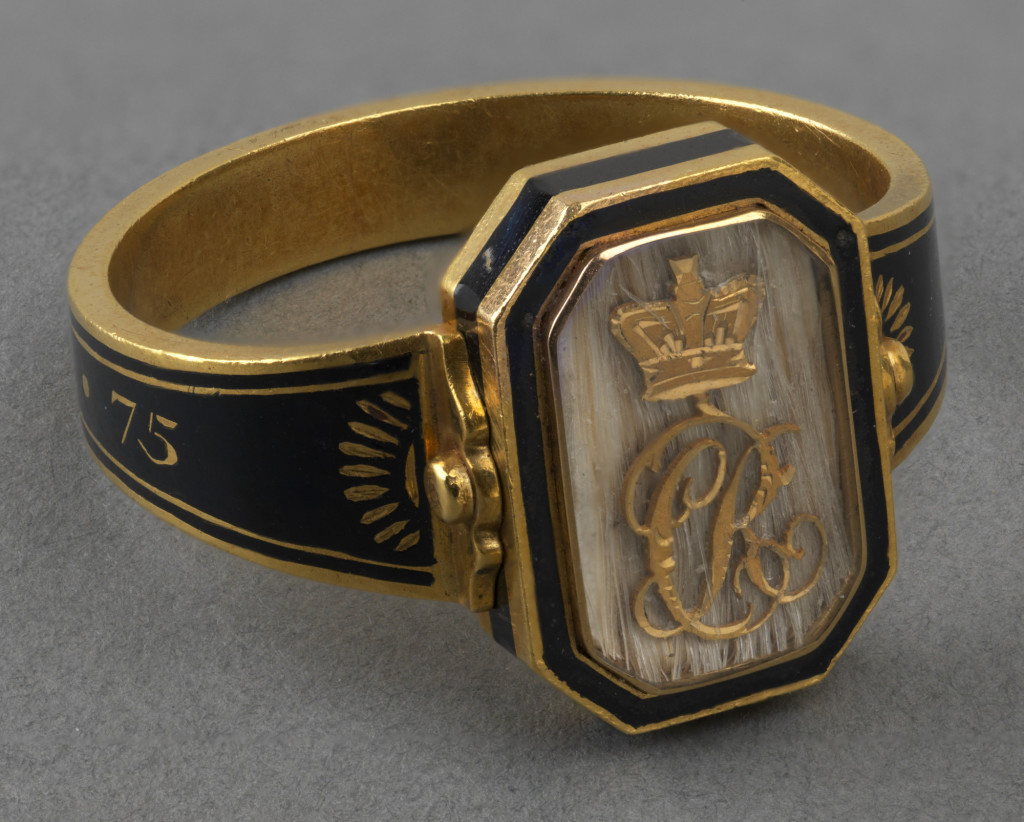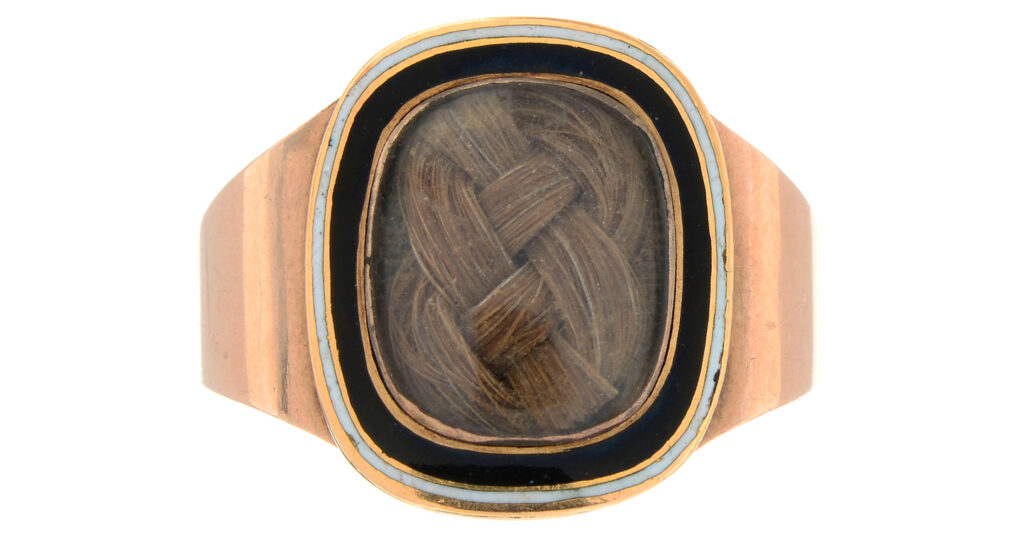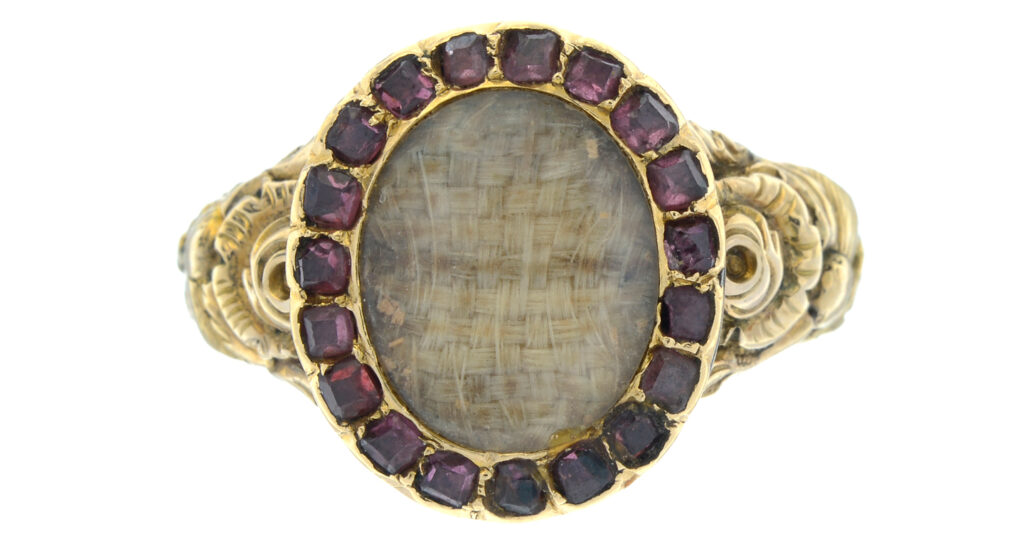Royalty & Control in a Mourning Ring for a Queen, 1818

Charlotte of Mecklenburg-Strelitz was born on the 19th of May 1744 and passed away on the 17th of November, 1818. Her role as Queen, as the wife of George III and her role as a popular public figure led to a widespread period of mourning. Her granddaughter, Princess Charlotte, died in childbirth a year earlier, which amplified the amount of mourning jewellery and accessory production to a level previously unseen in the mourning industry.
Visibility is the how fashion is shared. Without something to reference, fashion is singular and far more personal. The unification that stems from grief is strong. Harnessing this, a government can create a national identity through having a court mandated period of mourning and effectively dressing people in a uniform that makes them part of the mainstream culture. Be it the widow’s weeds, the arm band or the jewel, items are produced, effectively stimulating the economy and creating solidarity.
In the 1820s, jewellery, like the one seen for Queen Charlotte, took on the primary templates that would remain consistent throughout the 19th century. this style, with the bold black enamel, octagonal bezel, which in this case swivels, and the hair compartment, are all elements which would be replicated and remain popular. What makes this particular ring special is the gold crowned CR monogram on woven white hair. Having an actual memento of the Queen was highly rare and saved only for family and the closest of friends. The inscription on the band reads ‘ob 17 Nov, 1818 aet. 75’.






